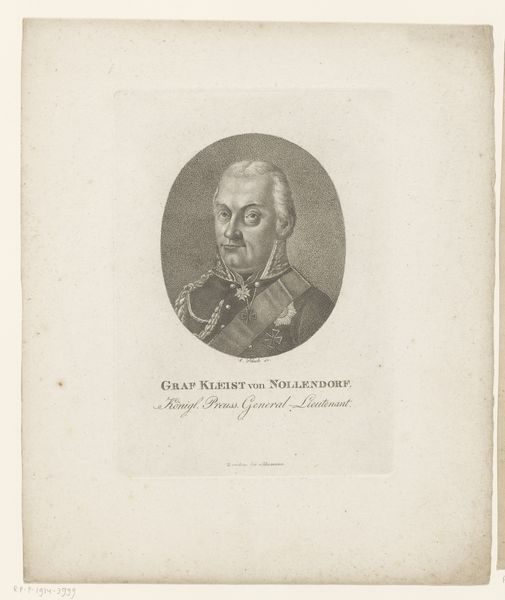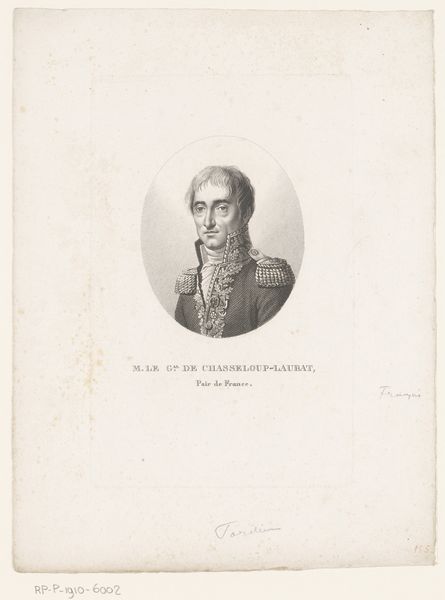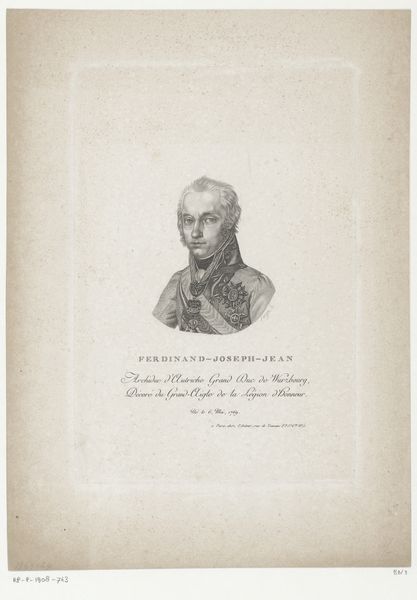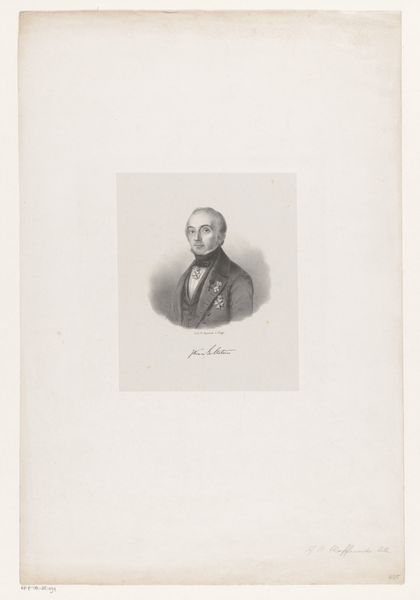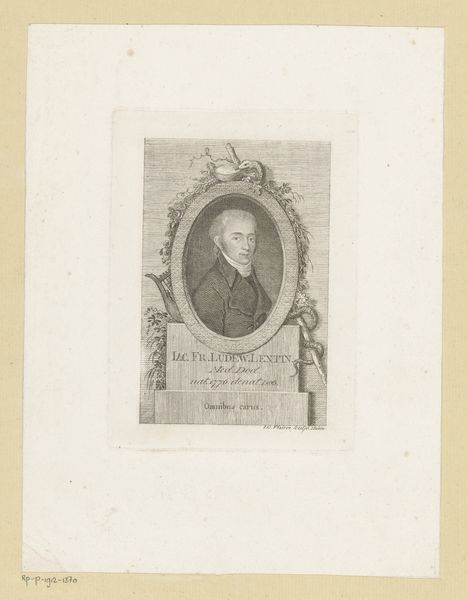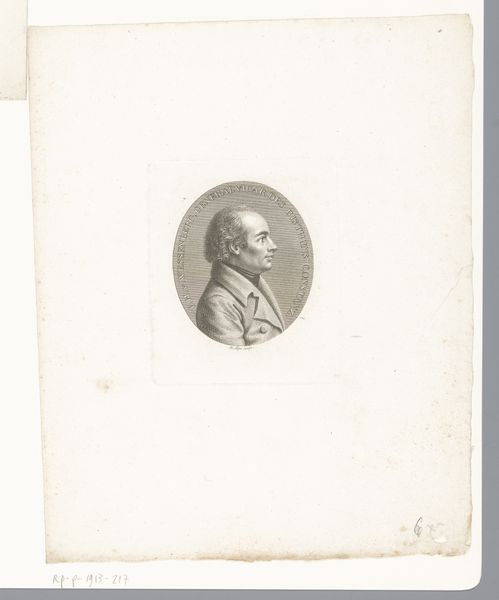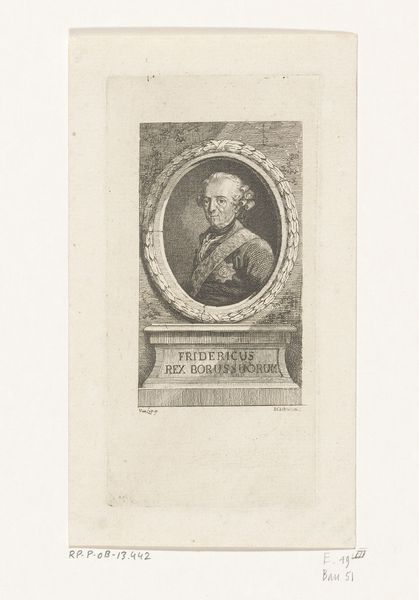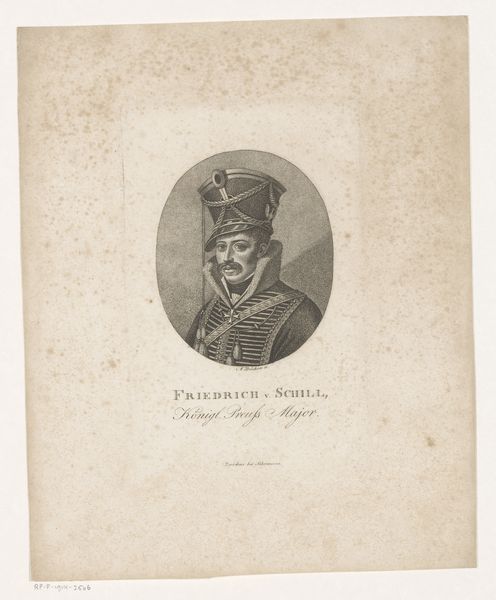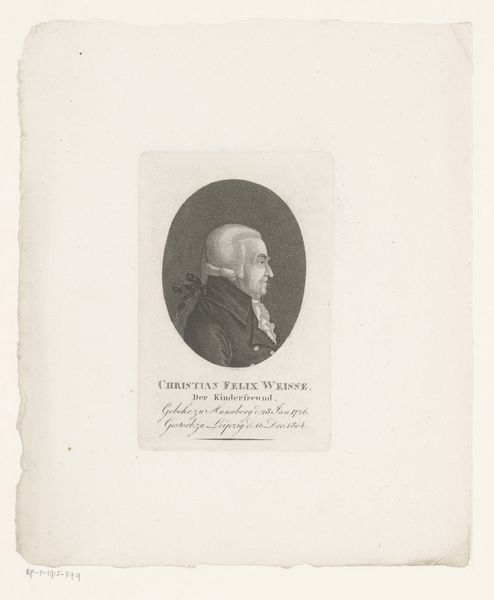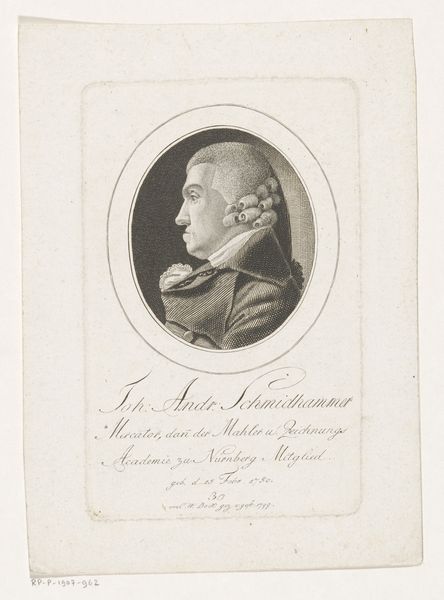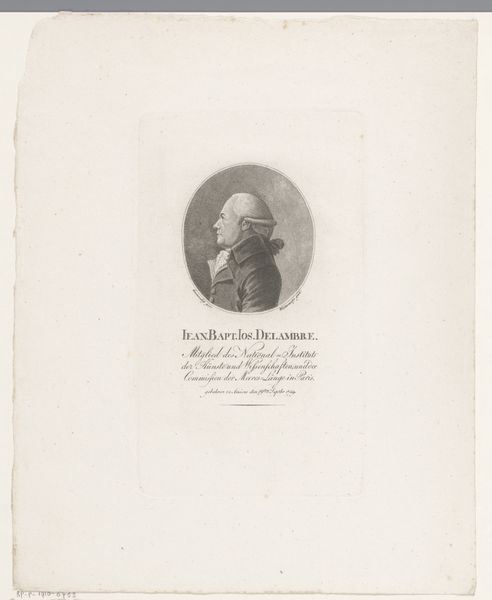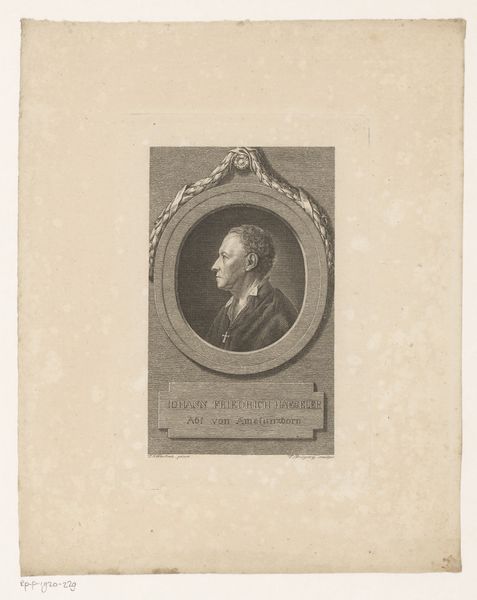
drawing, engraving
#
portrait
#
pencil drawn
#
drawing
#
neoclacissism
#
aged paper
#
toned paper
#
light pencil work
#
pencil sketch
#
old engraving style
#
personal sketchbook
#
sketchbook drawing
#
pencil work
#
sketchbook art
#
engraving
Dimensions: height 199 mm, width 130 mm
Copyright: Rijks Museum: Open Domain
Curator: Here we have Christian Schule's portrait of C.A. Fürst von Hardenberg, created in 1814. It's rendered with delicate engraving and pencil work. Editor: Immediately, the use of toned, aged paper creates a powerful effect, conveying a sense of history and gravity. It is so fragile but very imposing. Curator: Indeed, the choice of materials is significant. This portrait coincides with a tumultuous period in European history, the decline of the Napoleonic era. Hardenberg himself was a Prussian statesman instrumental in reforming the Prussian state. He modernized governance, he abolished feudalism. Editor: Fascinating. And consider the labor involved. This isn't just a quick sketch. It embodies a dedication to craft and the social standing of its subject, from sourcing the materials, commissioning, sitting and execution. There's an implicit value assigned, reflecting the class structures of the time. Curator: Precisely. Moreover, look at the composition. The oval frame is in alignment with the Neoclassical style and recalls imperial portraiture while subtly undermining its traditional grandiosity. Editor: Note the light pencil work that emphasizes his profile. His stern look and uniform shows us a man who’s imposing and unapproachable. Curator: Certainly. Hardenberg was, after all, a powerful figure during a period of immense political and social upheaval. The artist had a difficult balancing act to perform in illustrating power but also perhaps the unease and exhaustion that followed the Napoleonic wars. Editor: It’s striking to me how this engraving gives a palpable sense of a specific historical moment through simple materials. The medium itself conveys so much! Curator: Absolutely. When seen through the lens of both artistry and historical weight, a seemingly simple sketch provides insights into the socio-political context from which it emerges and, hopefully, invites us to contemplate our contemporary world, too. Editor: Well, it makes you consider who benefits from having their image, their labor, their materiality so readily visible or invisible today.
Comments
No comments
Be the first to comment and join the conversation on the ultimate creative platform.
